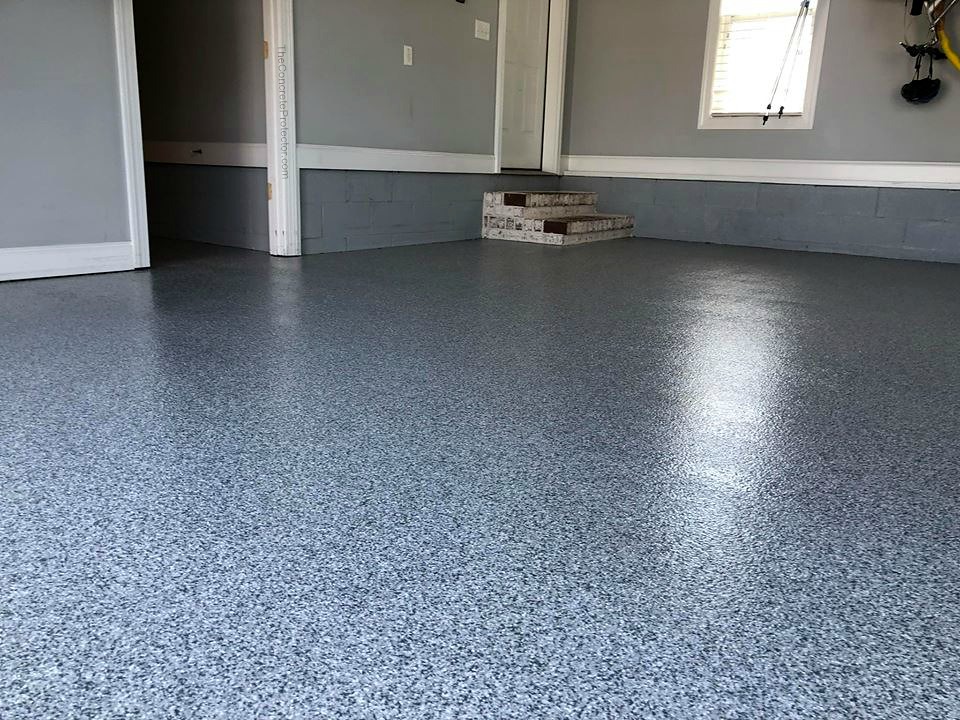Garage Floor Coatings: The Complete Upgrade Guide
Discover how garage floor coatings can protect and enhance your concrete surface. This guide compares epoxy and polyaspartic systems, explains surface preparation, and offers maintenance tips to keep floors looking great. Learn the pros, cons, costs, and practical steps to choose the right coating for lasting durability and improved aesthetics.

Garage floors take a lot of abuse from vehicles, tools, spills, and foot traffic. Applying a professional-grade coating protects the concrete, simplifies cleaning, and gives the space a finished, attractive look. Whether you are considering epoxy, polyaspartic, or another system, this guide explains the benefits, the leading product types, how to prepare the slab, and how to maintain the finish for years of reliable performance.
Why coat a garage floor?
A properly installed floor coating delivers several practical advantages:
- Increased resistance to abrasion and wear produced by cars, trucks, and foot traffic.
- Prevention of concrete dusting and long-term deterioration that comes from exposure and traffic.
- Easier cleaning and maintenance thanks to a smooth, non-porous surface that resists stains.
- Enhanced appearance with a variety of colors, decorative flakes, and gloss levels to suit your style.
- Extended service life for the concrete slab, making the garage more functional for storage and work.
Investing in the right coating keeps your garage cleaner and reduces the need for costly repairs over time.
Popular coating types and what they offer
Several coating technologies are available, each with different strengths:
- Epoxy coatings
Epoxy is a two-part system consisting of a resin and a hardener that chemically crosslinks to form a tough, adherent surface. Epoxy is known for a high-gloss finish, excellent chemical resistance, and long-term durability when applied correctly. It is a widely used option for homeowners seeking a balance of performance and cost.
- Polyaspartic coatings
Polyaspartic is a fast-curing polyurea derivative that provides rapid return-to-service, strong UV stability, and flexibility in application temperatures. Because it cures quickly and resists yellowing from sunlight, polyaspartic systems are popular for climate-sensitive installations and for jobs where downtime must be minimized.
- Other alternatives
Acrylic sealers, polyurethane topcoats, and hybrid blends are also used depending on project goals. Acrylics are often lower cost but offer less durability. Polyurethane layers can add abrasion and chemical resistance when used as a topcoat over primers or epoxy bases. Hybrid systems combine materials to optimize adhesion, toughness, and appearance.
Preparing the concrete for a successful coating
Surface preparation determines how well a coating bonds and performs over time. Key steps include:
- Cleaning: Remove dirt, oil, grease, and loose debris with degreasers and pressure washing or scrubbing.
- Repairing: Patch cracks, spalls, and holes with appropriate concrete repair products so the surface is smooth and level.
- Profiling: Mechanically profile the slab by grinding or shot blasting. This creates the roughness that coatings need to adhere properly.
- Moisture testing: Test the slab for moisture vapor emissions and dampness. Excess moisture can cause adhesion failure, so tests guide product selection or mitigation steps.
- Priming: Use a primer if recommended by the coating manufacturer to improve bonding and seal the concrete pore structure.
Skipping or rushing any of these steps increases the chance of blistering, peeling, or premature wear.
Why homeowners choose epoxy
Epoxy remains a favorite for many residential garages because of these advantages:
- Extreme durability and impact resistance for vehicles and dropped tools.
- Strong chemical resistance to oils, gasoline, and common household chemicals.
- Low maintenance: the smooth, sealed surface wipes clean easily and resists staining.
- Visual options: available in many colors, with the ability to add decorative flakes or metallic effects.
- Brightening effect: glossy epoxies reflect light and make the space feel brighter and more inviting.
- Cost-effective over the long term by protecting the slab and reducing the need for repairs.
How polyaspartic compares to epoxy
Polyaspartic systems offer a slightly different performance profile:
- Curing time: polyaspartic cures rapidly, often allowing vehicle traffic the same day, whereas epoxy typically needs 24 to 72 hours.
- Temperature tolerance: polyaspartic can be applied over a wider temperature and humidity range.
- UV resistance: polyaspartic resists yellowing and fading from sunlight better than standard epoxy.
- Application thickness: polyaspartic is usually applied thinner, which can speed installation.
- Flexibility: some polyaspartics provide more flexibility to accommodate minor substrate movement.
- Cost: polyaspartic systems generally cost more upfront but can save downtime and maintenance costs in the long run.
| Coating Type | Typical Cure Time | UV Resistance | Chemical Resistance | Cost Range |
|---|---|---|---|---|
| Epoxy | 24 to 72 hours | Moderate | Excellent | $3 - $7 per sq ft |
| Polyaspartic | 2 to 4 hours | Excellent | Very good | $5 - $10 per sq ft |
Prices, rates, or cost estimates mentioned are based on current information and may change over time. Independent research is advised before making financial decisions.
Maintaining a coated garage floor
To keep a coating performing well for years, follow these simple maintenance steps:
- Regular cleaning: Sweep or dust mop to remove grit, then wash with a mild soap solution and soft-bristled brush when needed.
- Prompt spill cleanup: Wipe up oil, antifreeze, or other automotive fluids quickly to prevent staining.
- Avoid harsh chemicals: Use cleaners compatible with your coating to avoid dulling or degrading the finish.
- Use mats and pads: Place mats at entry points and under parked vehicles to trap dirt and moisture.
- Inspect periodically: Look for signs of wear, scratches, or delamination and repair small issues before they grow.
- Recoat as needed: Depending on use, a fresh clear topcoat every few years can restore gloss and protective properties.
Final thoughts
Choosing the right garage floor coating depends on budget, desired appearance, expected traffic, and climate. Epoxy provides durable, attractive protection at a reasonable cost, while polyaspartic offers speed and superior UV stability for faster projects and sunnier locations. With proper surface preparation and ongoing maintenance, a quality coating will extend the life of your concrete, simplify cleaning, and transform your garage into a more functional, attractive space.






